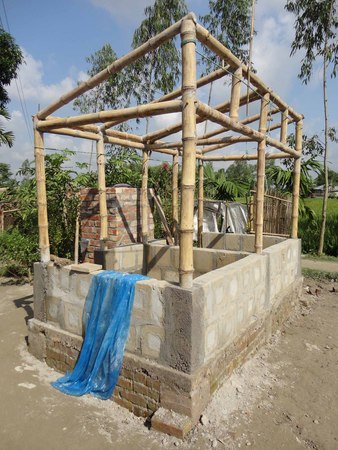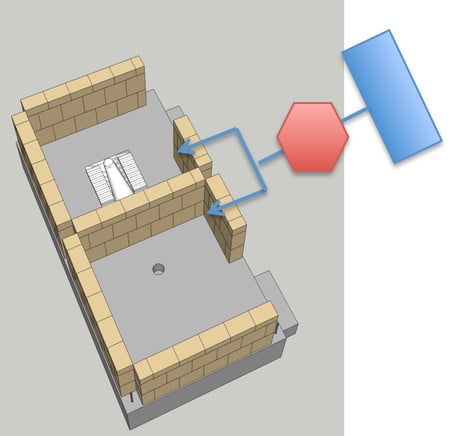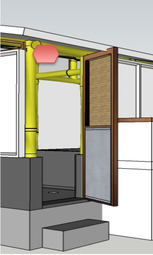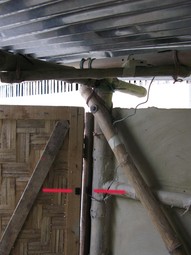How to assess the ability to remove waste safely
 the wash and toilet facility under construction
the wash and toilet facility under construction
The above ground,visible wash and toilet building is the part people see and use daily, but what lurks below the often water soaked ground is what really does all the work to ensure improved health.
The size of the 2 trial septic systems compared to the amount of waste water they have to treat is critical. If they are too large, the construction cost is higher for no benefit. If the systems are too small, the treatment will be insufficient and lead to blockages and failure. If the systems are not fully waterproof, surrounding groundwater in the wet season will mean no treatment occurs.
But how much waste water will be generated? The answer is no one really knows. The issue was discussed by the construction team and villagers at the and widely varying estimates of water use for toilet and washing were given. The family sizes of the 2 trial systems differs and both can change.
The method used to assess the ‘real’ water use is using a low flow (low pressure) water meter to measure all water used. Worldskills plumbers recommended and found the meters and they will be installed to measure all water into the facility which will be very close to all water entering the waste water system. Daily water meter recordings will be the job of the family and water reading sheets have been distributed and training on how to complete them given.


To cross check the water figures, two data loggers will be installed on the toilet and wash area doors of each unit. These will record the number of door openings and closings and the duration of each. Local SAFE team members have been trained to use the data loggers and retrieve the data.


Final location on the trial units and a trial on the SAFE office toilet door to allow the local team to learn how to set and download the data loggers.
HH is also currently trying to find microbiological testing facilities near the project site to be able to test the final treated effluent.









